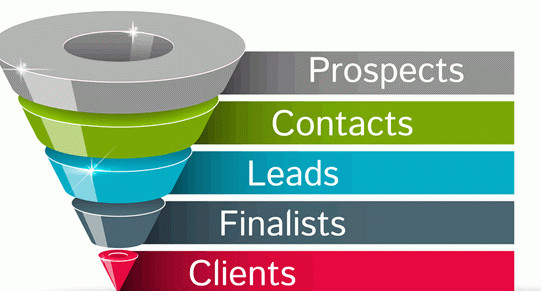
How Inbound Marketing Creates a Win-Win Sales Experience
What does it feel like to be inside your online sales funnel?
Chances are, if you're like many sales-driven B2B businesses with little to no experience with inbound marketing, you need inbound marketing to help you fix the tactics that drive prospects away as often as spur them to buy. Inbound Marketing creates a Win-Win Sales Experience.
I think back to an early car buying experience. I was looking at cars for my daughter, who was about to leave for college. We arrived at the dealership and walked around looking at models and pricing. We knew which car we were interested in, but we'd never driven that make or model.
A salesman approached and we asked about taking one of the cards out on a test drive. The salesman said we would need to come inside and sign a "Purchase Intent" document. Basically, we needed to commit to buying the car before they would give us a test drive! We were still trying to figure out which car we liked, and he was pressuring us to close the sale.
We walked off the lot and never looked back.
It's not just the car salesmen who are guilty
While this is a somewhat extreme and, I hope, rare example of poor salesmanship, there are, unfortunately, a number of online practices that I routinely see B2Bs engaging in that create similarly undesirable buying/selling experiences – with, I can only imagine, corresponding results.
For example, I see many businesses requiring a prospect to supply a large amount of personal information plus responses to prying sales questions regarding budget, time to buy, and so forth just to obtain product literature. Is it any wonder so few of them convert?
There are many things wrong with this scenario, but let's start with one:
The primary obstacle here is when the prospect's expectation that this information should be available for free or with very little buy-in clashes with the reality of the high buy-in required where the prospect is expected to divulge a lot of personal information. It's not a fair trade. It doesn't inspire trust. Erecting unnecessary hurdles in sales is always a bad idea. Your job is to make the path to purchase the path of least resistance, not most.
What's more, your prospect is probably wise to the fact that this information is designed to facilitate a sales call that they probably aren't ready for. It's a safe bet that this overly-aggressive approach is sure to drive all but the most stalwart prospects off the lot. Can your business really afford to turn all other interested, but not yet committed, prospects away?
So how do you handle these prospects in such a way as to get them to eventually convert?
The trick is to understand how Inbound Marketing Creates a win-win buying/selling experience – one that removes obstacles, instead of erecting them. And this starts before a sales person ever makes contact. It starts with marketing – specifically, inbound marketing.
Inbound marketing is about connecting with your prospects when their interest is already piqued and drawing them gradually, but steadily, down your sales funnel through an exchange of information that serves them as much as it does you. The give and take are in proportional lock step. Prospects happily share more and more of their personal information with you because at each step of the way you reprove the value of doing so. By facilitating their decision-making process over time, you earn their trust, and remove obstacles to their purchase decision. When they're finally ready to pull the trigger, your sales team has all the information they need to close the sale effortlessly, leaving them with more time to close more sales. This is how Inbound Marketing Creates a win-win situation. But it only works when you conduct yourself vis-à-vis your leads as an "obstacle remover" – or, in other words, as a guide.
